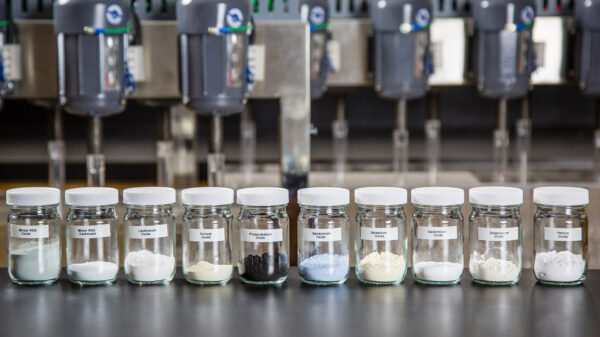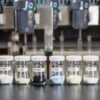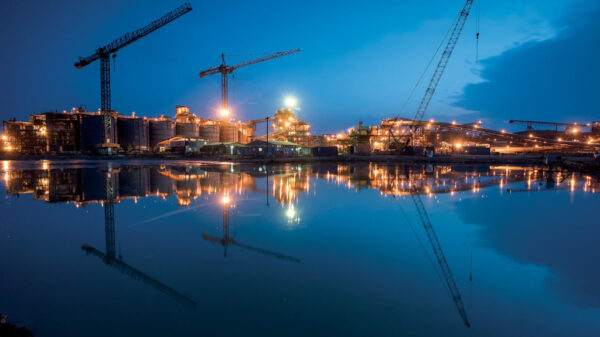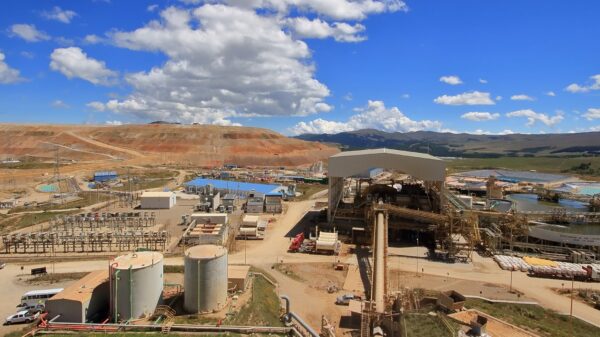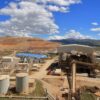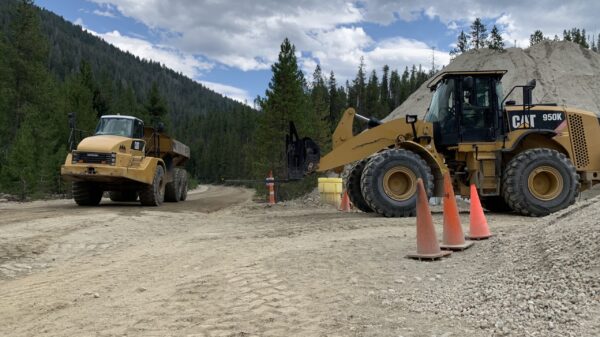Australia’s Atlantic Lithium Ltd. (ASX: A11) (OTCQX: ALL) is set to do its part in helping the United States break free of its dependency on Chinese lithium.
The company announced on Tuesday that it was building Ghana’s Ewoyaa lithium mine, and had designated half of its output to be refined in a plant presently under construction by Piedmont Lithium Ltd (NASDAQ: PLL) (ASX: PLL) in Tennessee.
The company is presently working on gathering information for its Definitive Feasibility Study (DFS) for the Ewoyaa Project, which it started in June 2023 to confirm the project’s economic viability and profitability potential.
The study indicates the ability to produce 3.6 million tonnes of spodumene concentrate over a 12-year life of mine (LOM) period. This achievement is attributed to the project’s 35.3 million tonnes at 1.25 per cent lithium oxide Mineral Resource Estimate and ore reserves of 25.6 million tonnes at 1.22 per cent lithium oxide. The DFS also takes into account conservative LOM concentrate pricing of USD$1,587 per tonne.
Read more: Lithium South Development updates leadership roster, appoints new director
Urgency to secure supply of lithium has grown
In October, Atlantic Lithium acquired a mining lease for the project. This sets the stage for Ewoyaa to emerge as one of the next major spodumene concentrate producers. The project’s strategic location benefits from excellent infrastructure and has a proven track record of producing a spodumene concentrate product suitable for conversion for use in EV batteries.
China is actively investing in lithium mines in Zimbabwe, Mali and the Democratic Republic of Congo to secure the battery metals required for its dominant electric-vehicle industry. The urgency to ensure a stable supply of critical battery materials, such as lithium, nickel and cobalt, has grown significantly due to volatile price fluctuations and the US administration’s push for companies to decrease their dependence on China.
According to BloombergNEF, there is a forecast that mines across Africa will increase lithium output by more than 70 times by 2030 compared to last year’s volume. This increase would raise Africa’s share of global supply to 14 per cent from 1 per cent.
Atlantic Lithium has set its sights on producing its first concentrate at Ewoyaa in the second quarter of 2025. The company is currently waiting on an environmental permit. Industrial-scale production is slated to commence in 2026 with a projected production of 36,000 tons of lithium carbonate equivalent, enough to power approximately 800,000 Tesla Model 3s.
Africa is poised to become a Lithium powerhouse, with the creation of mines across Africa growing its share of the market from 1% to 14% by 2030.#LIS $LISMF $OROCF $TSLA $ALLI $APHLF #lithium #argentina #Mining #ElectricVehicleshttps://t.co/V4300meuBR
— Lithium South Development Corporation (@LithiumSouth) October 31, 2023
Read more: Lithium South Development first production well installed at Hombre Muerto lithium project
Read more: Lithium South Development expands production goals, updates PEA on Hombre Muerto lithium project
Argentina lithium represents an alternative source to Chinese lithium
On Oct 19, President Biden announced USD$2.8 billion in Department of Energy grants from the Bipartisan Infrastructure Law to 20 manufacturing and processing companies for projects spanning across 12 states.
President Biden also introduced the American Battery Materials Initiative to rally the entire government in securing a dependable and sustainable supply of critical minerals utilized in power generation, electricity and electric vehicles (Evs).
Especially as, according to S&P Global (NYSE: SPGI), the demand for lithium-powered EV batteries is projected to grow annually between 2022 and 2030 at over 22 per cent rate.
Australia, Chile, China and Argentina lead global lithium production, contributing to over 95 per cent of the mineral’s worldwide output.
Nevertheless, the United States is home to what some experts believe are the world’s largest lithium deposits, second only to those found in the Lithium Triangle region in South America. The states of Nevada, North Carolina and California collectively hold an estimated 4 per cent of the world’s lithium reserves.
There is currently only one operating lithium mine in the US: Albemarle Corporation‘s (NYSE: ALB) Silver Peak site in Nevada’s Clayton Valley, and it has attractive considerable controversy, which will likely mire the development of the proposed operations down legally for years.
Meanwhile, companies like Sociedad Quimica y Minera de Chile SA (NYSE: SQM) in Chile, or Livent Corporation (NYSE: LTHM) or enterprising junior Lithium South Development Company (TSXV: LIS) (OTCQB: LISMF) in Argentina, represent significant options for interim or long term sources of lithium.
In 2022, Argentina produced an estimated 6,200 metric tons of lithium according to marketing firm, Statista. The South American country achieved its highest production of this metal in 2018, reaching 6.4 thousand tons.
As the demand for lithium-powered EV batteries continues to grow, efforts from both the private sector and the U.S. government are aimed at reducing dependency on China and tapping into alternative sources like Ghana, and potentially Argentina, both of which hold promising lithium reserves.
.
Lithium South Development Corporation is a sponsor of Mugglehead news coverage
.
Follow Joseph Morton on Twitter
joseph@mugglehead.com







